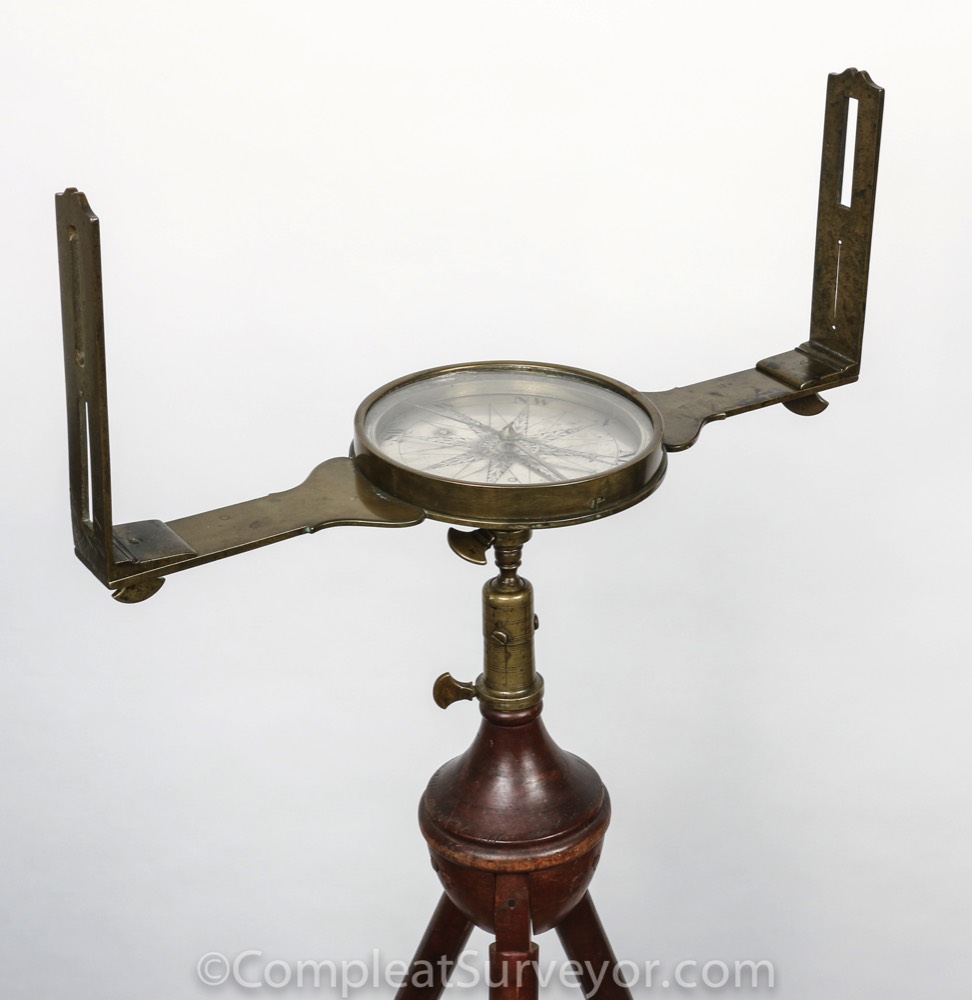
Nathan Storrs Compass - Circa 1795
Plain Compasses
A Plain Compass is a device for measuring angles comprised of a set of sights, a magnetic needle and pivot, a needle ring usually divided into 360 equal spaced divisions with the North - South axis of the needle ring permanently fixed parallel to the line of sights.
I show many Plain Compasses on the Colonial Era and Post Revolutionary War Era Webpages, and describe the evolution of the Surveyor's Compass on those pages. Those pictures and descriptions will not be duplicated here.
Colonial and Early American Plain Compasses could be made out of wood or brass, or a hybrid of the two. While the same basic shape, Plain Compasses differed greatly from one maker to the next, largely based on the amount of engraving that the maker did on the compass face. The engraving varied from very basic to art-like creations. The art-like creations are the most valuable and collectible surveying instruments made in America.
The Plain Compass (aka "Circumferentor") was the instrument of choice for most surveyors in America from the earliest settlements until roughly 1825. Professor Gillespie, in his landmark book A Treatise on Land-Surveying (1855), articulated the value of compasses very neatly:
"[T]he compass is a very valuable instrument, from its simplicity, rapidity and convenience in use and though never precise, and seldom correct, it is generally not very wrong."
A Plain Compass was rarely correct because the magnetic needle pointed to the Magnetic North Pole as opposed to the True North Pole. Even this would be ok if not for the fact that the magnetic north pole shifts meaningfully over time and even somewhat during the day. Please see the Accuracy of Compasses Webpage and the Vernier Compass Webpage for more about the the accuracy issued face by compasses in general and the Plain Compass in particular.
Notwithstanding these accuracy issues, while setting boundaries between Colonies typically required more sophisticated instruments, like Theodolites, Plain Compasses were "good enough" for most of the surveying that needed to be done in Colonial and Early America Era.
Broad Spectrum of Price and Quality
Plain Compasses covered a very broad spectrum of quality, accuracy and price during the Colonial and Early American Eras. Throughout most of the Colonial and Early American Era, Plain Compasses were at both the bottom end and top end of the surveying compass market. Compare the wood and Hurtin compasses pictured above. The compass on the left looks homemade by a guy who whittled occasionally, and offers a printed compass card of unknown but questionable accuracy. The wonderful Christian Hurtin 1794 Compass on the left is a work of art, probably with a fairly accurate divided ring. A surveyor of means (probably from a well to do family) likely commissioned Hurtin to make the compass.
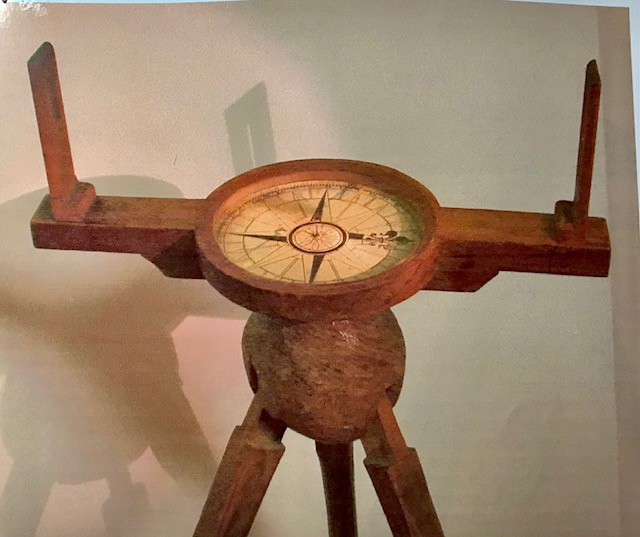
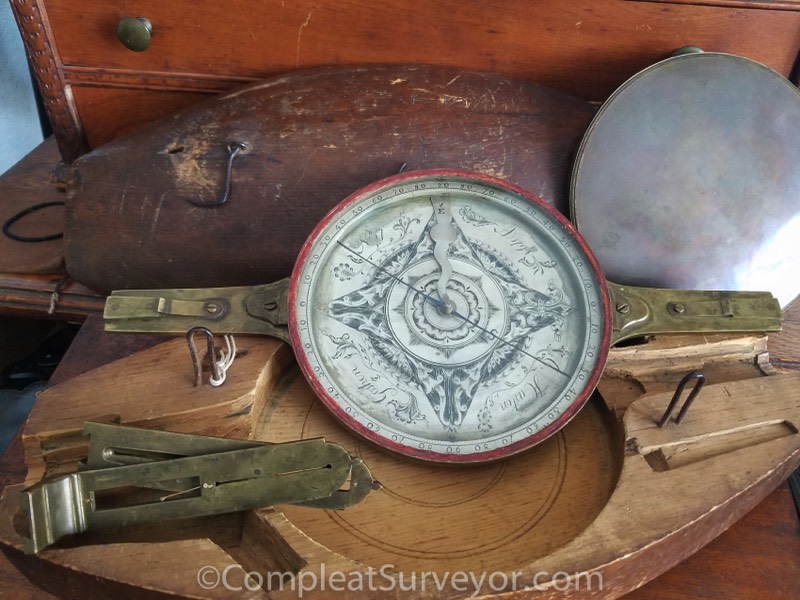
Dividing the Ring
I really like to compare the look at how carefully and accurately the maker engraved the divided ring on early compasses. Check out the two compasses below. I found these pics in Bedini's files in the Smithsonian. The Compass on the left is by Andrew Lamb Circa 1760 - very early. I don't recall seeing a Compass divided to 30 minutes this early before. The Compass on the rightt is unsigned, other than with JDR. Bedini didn't know who that was. That compass looks divided by hand to my eye
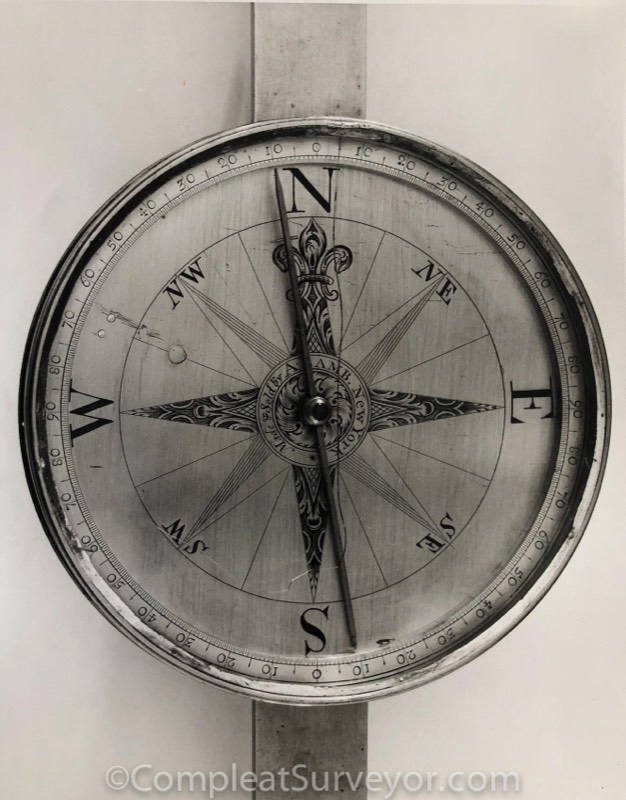


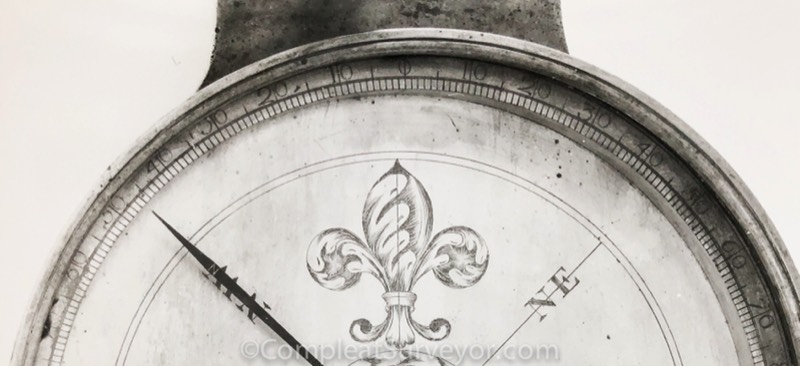
Relative Pricing of Plain Versus Other Compasses
During the Colonial and Early America Era, as time passed, Vernier Compasses would eventually start to dominate the top end of the compass market, with some notable exceptions, like Plain Compasses made by the Chandlees. But Plain Compasses compass remained the compass of choice for economy minded surveyors. A Whitney Plain Compass was just as accurate as a Whitney Vernier Compass, after all, but just lacked the conveniences that went with the more expensive instrument. Based on the Whitney ad below, Whitney priced his Plain Compasses at roughly 1/2 of the price of his Venier Compasses.
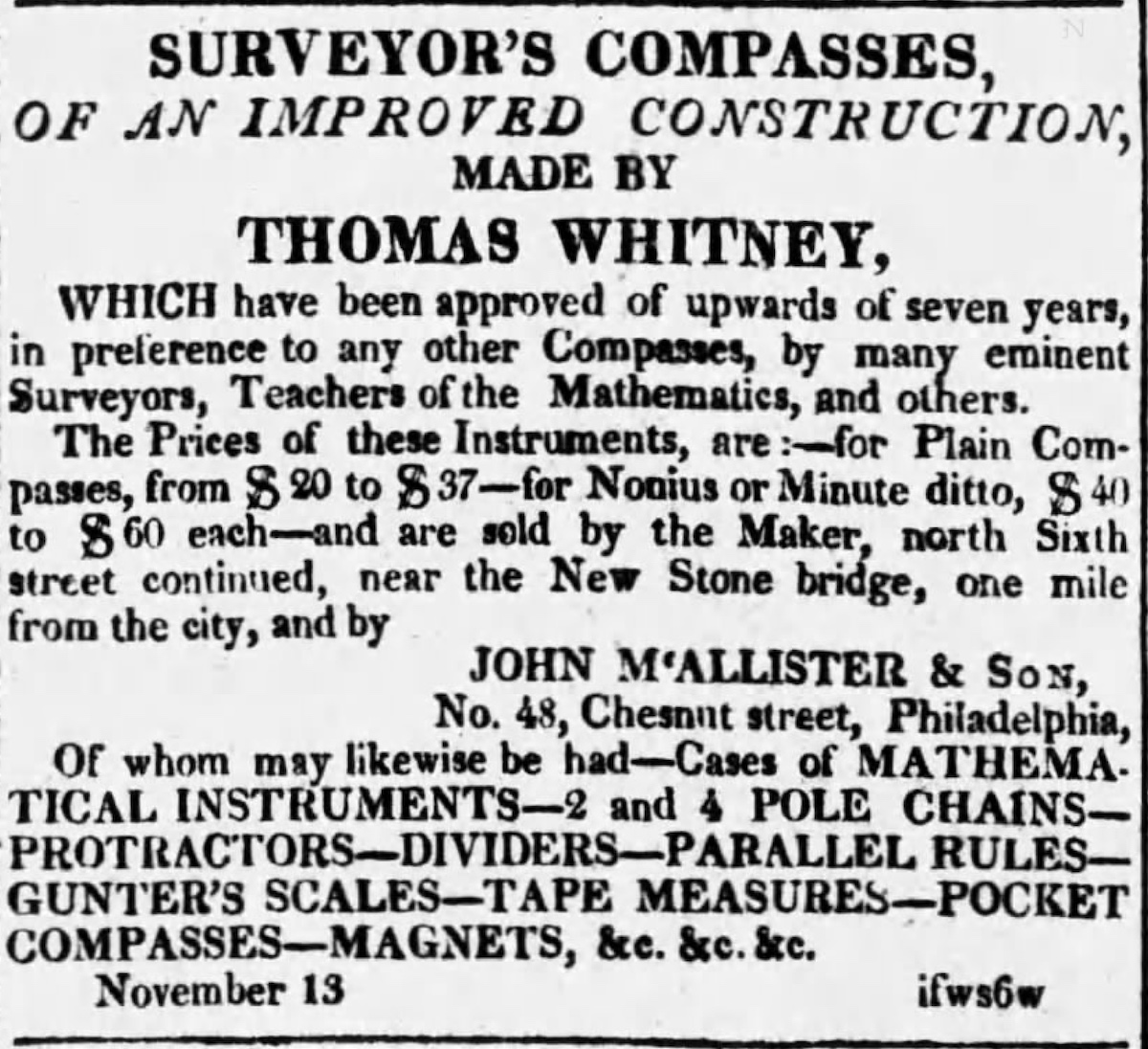
Amos Eaton - Well Known Author - Used a Plain Compass
I spent some time recently looking thru an 1838 edition of a textbook written by Amos Eaton. Fascinating. Eaton was a fairly impressive guy, and founded the Rensselaer Institute, where he taught surveying among other things. In his 1838 edition Eaton goes thru in great detail how to do different surveys, based on the surveys that he did over the years. Interesting Points:
1. He evidently always put the North end of the compass out front. I’ve found other authors who say to always use the same sight out front, preferably the North sight.
2. Eaton used a plain compass only. His 1838 book doesn’t mention the words "nonius" or “vernier” a single time with reference to a compass.
3. Eaton didn’t worry about variation whatsoever unless he was resurveying a property and the angles were known and listed.
4, On a resurvey, Eaton says your first have to figure out how much the variation changed since the prior survey. Once you do that, if the bearing is south (say S 5 E), you point the sights in that direction. You then take the glass off the compass and move the North end of the needle over by the change in variation. Say 3 degrees East. You then look at the south end of the needle to see where that leaves you - S 2 E. That’s the bearing you now follow, and you point the sights so the compass is at S 2 E.
© 2020 Russ Uzes/Contact Me